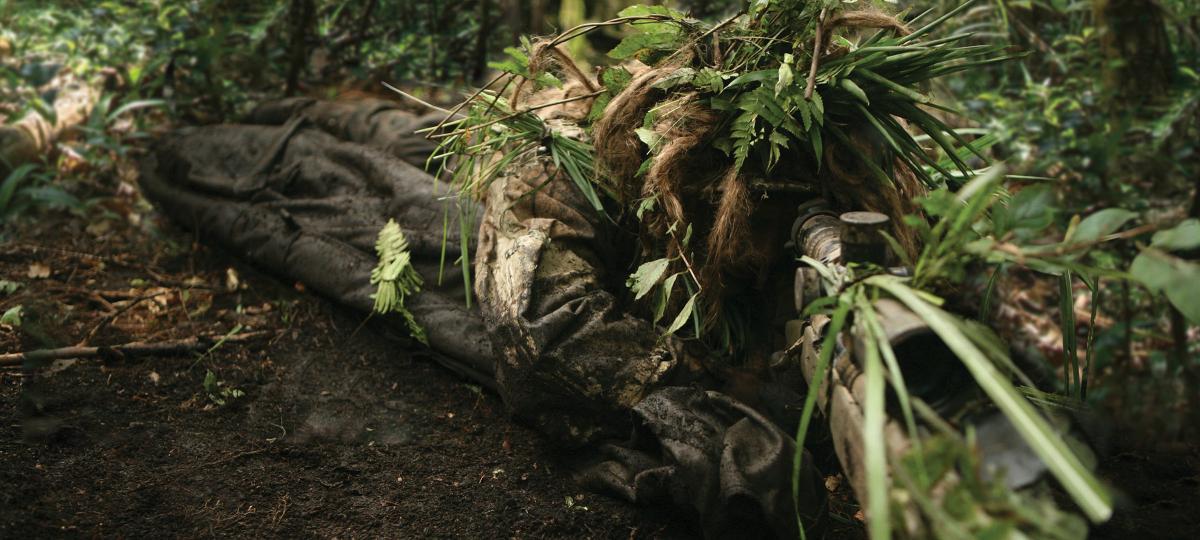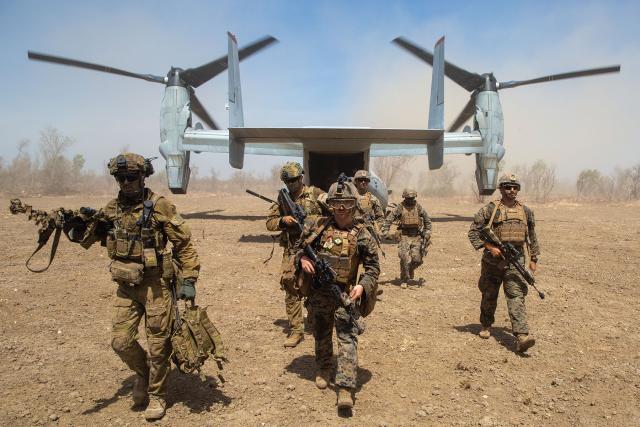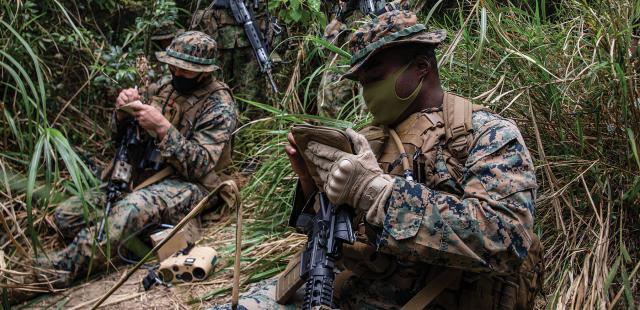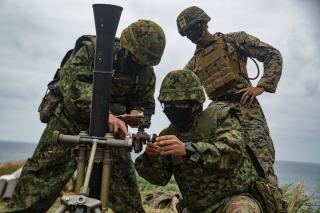General David H. Berger

Today in the western Pacific, China links sophisticated sensors with precision weapons to extend its strike regime over the territories of its neighbors. Under the perceived protection of this threatening umbrella, it uses a variety of coercive approaches to intimidate and bully U.S. allies and partners. Beijing’s investments in intelligence, surveillance, and reconnaissance (ISR) and its precision-strike complex also target the United States. For at least the past three decades, China has studied U.S. concepts for joint force power projection and developed strategies and capabilities to counter them, aiming to keep the joint force at “arm’s length,” disrupt U.S. planning, and complicate U.S. decision-making. The hope is to discredit the United States in the eyes of its allies, partners, and neutral parties, who, it is believed, may come to doubt the extent of U.S. capabilities and commitment in the face of such challenges. By holding the joint force at arm’s length, China thinks it can apply the full weight of its coercive tools without interference.1

These observations have been central to the U.S. Marine Corps force design effort from the beginning of tensions with China, particularly over the past 12 months. As the service refined Force Design 2030 through wargaming, experimentation, and analysis, it became apparent that new approaches were required to address China’s antiaccess/area-denial strategy, and that Marines could be part of the solution. This new thinking is reflected in A Concept for Stand-In Forces, which describes how forward-postured, steady-state forces operating in contested areas—capable of transitioning rapidly from competition to crisis to conflict and back again—can create a strategic advantage. Built on the foundation provided by the maneuver warfare philosophy in Marine Corps Doctrinal Publication 1, Warfighting, the Concept explains how naval expeditionary forces, operating in the littorals, can support fleet and joint operations to disrupt the strategies of China and other competitors.
Stand-In Forces Are Nimble
Small, lethal, low signature, and mobile, stand-in forces (SIF) are relatively simple to maintain and sustain, designed to operate across the competition continuum within a contested area as the leading edge of a maritime defense-in-depth. Depending on the situation, SIF may include elements from the Marine Corps, Navy, Coast Guard, special operations forces, interagency forces, and allies and partners. This last element is the most critical: every aspect of these deployments must be carried out in close partnership with host nations and partners. Whenever U.S. forces operate in a host nation, they must do so with the full involvement of that nation in conceptualizing and executing the overall mission.
The main ideas behind the SIF concept are deceptively simple. First, find a potential adversary’s people and things (such as weapon systems, sensor systems, submarines, etc.) in a given area, and then track them at a level that facilitates targeting by fleet or joint weapons until they leave that area. This finding and tracking effort starts as soon as the possible target is identified and continues at every point along the competition continuum. Next, SIF must be hard for a potential adversary to find by maintaining a low signature, moving frequently and unpredictably, and using deception. If armed conflict begins, use knowledge of the adversary to help the fleet or other elements of the joint force attack quickly and effectively, blind the adversary, and deny him maritime areas to disrupt his plans and force him to move into other places where SIF and the fleet have an advantage.
Stand-in forces’ enduring function emerges from these straightforward ideas: win the reconnaissance and counter-reconnaissance fight in support of the fleet and joint force—and do so at every point on the competition continuum. This enduring function provides two primary benefits. First, it supports deterrence through approaches such as “deterrence by detection” by integrating the yields of U.S. reconnaissance with other elements of national power, and by giving decision-makers more time to consider a wider array of options.2 Second, in the event deterrence fails and armed conflict occurs, winning the reconnaissance fight allows the fleet to attack effectively first and seize the initiative.
Next is winning the counter-reconnaissance fight. When Marines or naval expeditionary forces conduct SIF missions, they must make themselves hard to find. This imposes costs on potential adversaries, as they are forced to expend resources to find SIF. Winning the counter-reconnaissance fight in the context of a naval campaign also means that Marines in the littorals will screen for the fleet to protect it, and thereby increase the fleet commander’s freedom of action. Winning the reconnaissance and counter-reconnaissance battle enables fighting inside a contested area, and disrupts an adversary’s plans.
In the event of armed conflict, SIF will conduct sea denial in specific areas, which also attacks the opponent’s plans. Sea denial is nested within the fleet and joint force campaign plans. For example, denying a specific area can present a forward edge behind which the U.S. fleet can maneuver. Area denial can also “herd” an adversary into areas in which U.S. forces enjoy a relative advantage, or it can sanitize key straits or chokepoints.
This concept thrives through the application of integrated deterrence. For Marines, such integration necessarily includes the Navy, Coast Guard, and the rest of the joint force. It also includes integration with the interagency community.
The Department of State, in particular, is a pivotal partner based on the essential coordination with friendly nations on which the Concept is based. All parts of the U.S. presence need to speak with one voice in engage-ments with those nations. The United States must make common cause with them in deterrence outcomes. As well, in the SIF vision, Marines will often be operating from host nations’ sovereign littorals, which will necessitate true partnerships.

The U.S. forward defensive posture in the western Pacific is enabled by strong alliances and partnerships. In August 2021, U.S. Marines and Australian Army soldiers trained together during Exercise Koolendong at the Bradshaw Field Training Area in Australia. Credit: U.S. Marine Corps (Jacob Foster)
Marines Conduct SIF Operations With Allies And Partners
Cooperation with friends in littoral terrain is a central requirement for SIF. Today, the U.S. forward defensive posture in the western Pacific is enabled by strong alliances and partnerships built on shared values and interests. For SIF to be effective, this must continue.
Stand-in forces’ small footprint makes them less burdensome on host nations than larger U.S. formations. Still, to bring the SIF concept to life, more Marines must develop a sophisticated understanding of the interests, needs, and priorities of allies and partners. Some allies will be ready to support SIF immediately. Other partners may want to work with the United States but will hesitate to place visible and potentially provocative capabilities, such as manned aviation, in their sovereign littorals. Some partners, on the other hand, may eagerly seek such visible capabilities to support their goals. The United States must understand such nuances.
After the support of local allies and partners has been established, the ideal posture for a stand-in force would be layered, with unmanned systems farthest forward, then a layer of manned–unmanned teams, and finally a manned area. Heavy, less mobile, and logistically intensive systems would bed down outside the contested area and be brought into it periodically to perform specific tactical tasks.
This template would, of course, require adjustment based on circumstances. For example, today the United States is at a point on the competition continuum that is relatively permissive. Commanders performing SIF operations in such environments could potentially call on a wider array of assets to support them, especially logistics assets. That said, even in a permissive environment, Marines still fight the reconnaissance/counter-reconnaissance battle. Opponents collect information about U.S. forces, and this must always be accounted for. If the environment turns non-permissive or hostile, Marines adjust their posture to something closer to the ideal described above. In any case, at all times Marines must know and track potential adversary operating locations, unit formations, and platforms to meet the information requirements of partnered nations’ security forces as well as those of the U.S. fleet and joint force.
Marines use persistent awareness to help the fleet and joint force demonstrate they can attack effectively first should hostilities commence, denying the enemy the ability to reach his goals. Stand-in forces are positioned to gain access and facilitate close kill webs—webs that seek to integrate cross-domain capabilities from distributed forces (as opposed to less flexible and predetermined kill chains).3 For this approach to be effective, the Concept for Stand-in Forces envisions Marines integrating into emerging command-and-control structures such as the Navy’s Project Overmatch.
For survivability, Marine units must remain small, move often, and avoid or deceive enemy collection efforts. Staying small means that, in many cases, standard operating processes will have to be reimagined so automation can be applied to them, thus reducing the number of Marines needed to operate effectively within a contested area. Staying small also means radically reducing fuel consumption, which requires aggressive exploration of electric vehicles, alternative fuels, host-nation partnerships, and other specific actions that support the mission. Moving often in the littorals will likely involve U.S. forces leasing and operating transportation—both ashore and afloat—to augment emerging capabilities such as the light amphibious warship. The ability to deceive entails procuring a variety of decoys and necessitates invigorated training and education to develop and test creative ideas.
As part of naval and joint campaigning, stand-in forces will collect information according to the needs of the fleet and combatant commands. SIF will be forward-positioned and ready to employ multidomain tools across the operational spectrum in support of campaign goals. Depending on the situation, they will be organized as a task unit, task group, or task force under a naval commander who could be, for example, the fleet commander afloat or the Marine Expeditionary Force commander ashore.

U.S. Marines from 5th Air Naval Gunfire Liaison Company, III Marine Expeditionary Force, and soldiers from the Japan Ground Self-Defense Force’s 15th Brigade set up an observation post during an exercise on Okinawa, Japan, in April, 2021. Credit 3: U.S. Marine Corps (Brienna Tuck)
Creative, Original Thinking Required
Since the end of World War II, the United States has not faced as significant a sustainment challenge as this will be. Before anything specific can be undertaken, A Concept for Stand-in Forces must be introduced to U.S. partner nations, with whom the United States must work to understand the needs and interdependencies of all sides involved. Implementing the concept successfully depends on the nature of these relationships. Pacific Marines have, for decades, carried out relationship-building work, and today this background is essential to operate effectively from partners’ sovereign littorals. But Marines cannot build these relationships alone. The assistance of other stakeholders must be enlisted, including combatant commanders and the State Department. Even within U.S. forces, partnerships must be built and strengthened. Navy shipmates and Marines are also partners who must fully support the concept—together.
The first step will be to reduce to an absolute minimum the threats within contested areas. This means future U.S. systems will need long range and long endurance, and that the way U.S. forces operate will have to be reimag-ined. Host-nation partnerships, including via operational contracting, are required. And emerging technologies, such as additive manufacturing, renewable energy, and predictive analytics, must be procured and integrated. In the near- to mid-term, U.S. forces require new sustainment capabilities, because the current design is appropriate for only the most permissive environments.
The challenges to accomplish this redesign, which will include related naval concepts, are real and present. Ideas such as those described here address how to support the Concept for Stand-In Forces logistically, but methods to do this have not yet been validated. The Navy and Marine Corps fully recognize that a “campaign plan that cannot be logistically supported is not a plan at all, but simply an expression of fanciful wishes.”4 The task of moving to the next step has already begun, through wargames and the beginnings of new Navy and Marine Corps operational logistics concepts.
But these concepts need rigorous testing in a joint Marine and Navy cycle of wargames, experiments, and exercises. Results must feed the ongoing campaign of learning that underpins the Force Design 2030 effort. Today, many of the capabilities needed to realize A Concept for Stand-In Forces either do not exist or are in the prototype phase. The situation is analogous to when the Navy–Marine team developed doctrine for amphibious operations in the interwar period. Marines in the 1930s used whale boats to move from ship to shore as they exercised emerging concepts; Marines today can use similar surrogates to learn.
This initial version of the Concept for Stand-In Forces purposefully has a light touch when it comes to describing command-and-control relationships. Structures and approaches for these are evolving, particularly in the Indo-Pacific Command. Wargames and exercises will inform this area a great deal in the coming months and years. Whether the concept will work best under an existing structure is unknown, as is how to integrate it into Project Overmatch (or another of the emerging Joint All-Domain Command and Control approaches). These important questions must be answered soon, so that actual kill webs can be brought to life in a meaningful way.

Success of stand-in forces will depend not only on the capabilities of U.S. Marines and their joint partners but also on their ability to fight with regional allies. Here, Japanese soldiers and a U.S. Marine adjust the elevation of an M252 81mm mortar during a training exercise focused on air and surface fire support from an expeditionary advanced base in April, 2021. Credit: U.S. Marine Corps (Brienna Tuck)
The talent management implications of this vision are also significant. Purposefully reducing the number of Marines inside a contested area will require that they all be multiskilled and not just masters of a single specialty. Each Marine performing SIF missions must earn his or her seat by being able to accomplish a number of duties when required, such as establishing a communications network and synthesizing an intelligence picture.
In a 21st-century reconnaissance/counter-reconnaissance battle, an adaptive adversary will try to change signatures and adjust sensors to defeat the collection efforts of the United States and its partners, and to overcome their deception efforts. Marines on the front lines may have to write computer code to adjust the software on sensors and systems in real time. Marines may also need to lease coastal commercial vessels and have the qualifications to pilot them safely, so they can maneuver quickly in the littorals. The examples are many, but the implications are clear. Developing future Marines who will operate as SIF demands as much focused attention as any other aspect of the stand-in concept—perhaps more.
Determination
None of this will be easy. A Concept for Stand-in Forces is a sophisticated vision designed to provide solutions to a difficult problem. It will require changing how business is conducted, not just within the Marine Corps but also the Navy, joint force, and interagency. It will also necessitate constant vigilance over a time horizon measured in years. These challenges demand bold change. The Concept is one large step in the direction of that change.
The SIF model is envisioned for use in the western Pacific, but with critical thought and adjustments for specific situations, it can be used globally. Designed for the pacing threat, A Concept for Stand-In Forces would provide the Navy–Marine team a competitive advantage in places such as the Barents Sea, Baltic Sea, Arabian Gulf, or Andaman Sea. Well-trained, nimble forces—able to survive and fight effectively inside a contested area—are useful anywhere.
Marines enjoy a long history of developing concepts that were successfully turned into real warfighting advantages. Boldly entering places that foes wished to deny them, they have fought from inside contested areas. This is one of the primary reasons for which the nation has a Marine Corps. In the 21st century, there are contested areas that the nation needs to occupy before the shooting starts. A Concept for Stand-In Forces lights the beginning of the path to get there.
No comments:
Post a Comment